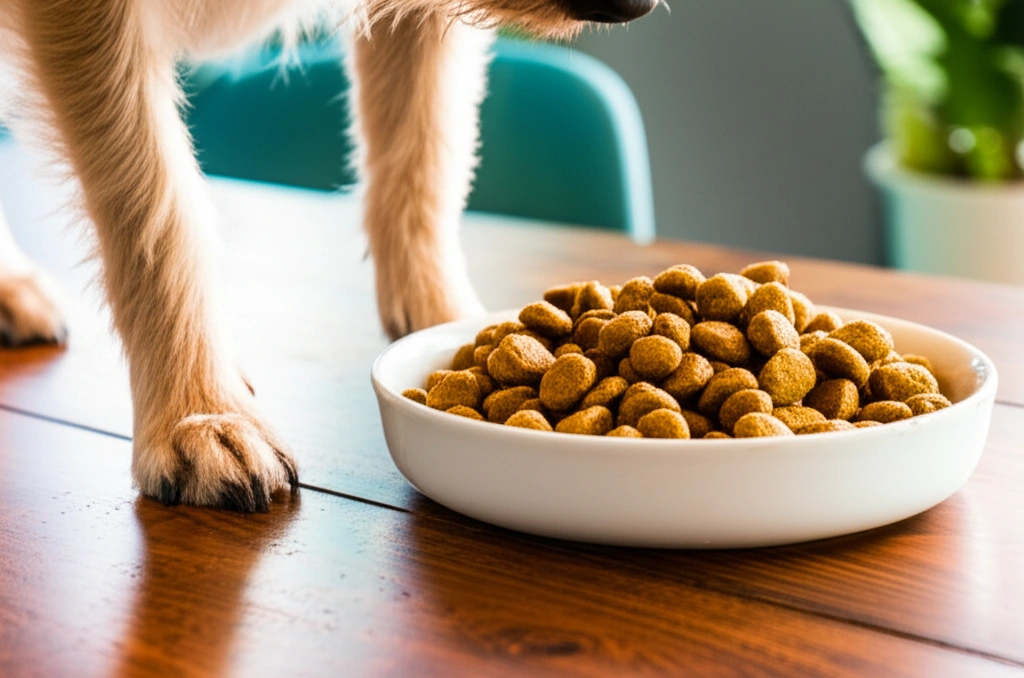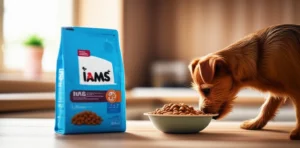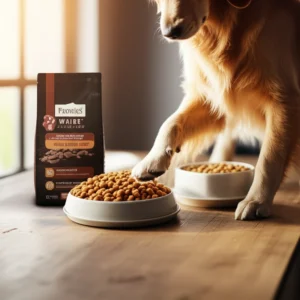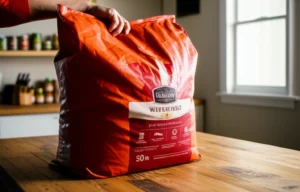Hey there! If you’ve got a tiny furball bounding around your home, you probably know small dogs aren’t just little versions of their big buddies. They have some pretty unique needs—especially when it comes to food. Wondering what the best dry dog food for small dogs is? You’re in the right spot. Let’s chat about how to choose the right kibble that keeps your petite pal happy, healthy, and wagging that tail like crazy.
Choosing dog food can feel like navigating a jungle of labels, brands, and claims, but don’t stress. I’ll break down everything you need to know, with no fluff and lots of heart. So grab a cup of coffee (or your kibble scoop) and let’s dive in!
Quick Answers
What’s The Best Dry Dog Food for Small Dogs?
Simply put: it’s dry food made with high-quality animal protein, appropriate calorie density for their tiny but mighty metabolisms, and bite-sized kibble that’s easy to chew. Brands like Royal Canin dog food, Hill’s Science Diet, and vetted small-breed formulas come highly recommended by vets and dog lovers alike.
Quick Checklist
- Small, crunchy kibble that fits their tiny mouths
- High-quality protein sources (think named meats, not mystery meals)
- Enough calories for their fast metabolism without tipping into obesity
- Added fiber or probiotics for gut health
- Formulated for their life stage—puppy, adult, or senior
Why Small Dogs Need Special Food
Metabolism Matters
Small dogs burn energy faster than, say, a big golden retriever lounging around. This means they need more calories per pound, but with a catch: it’s super easy to overfeed and put them on the path towards obesity. So the calorie content in their food isn’t just a number—it’s a balancing act.
Kibble Size and Dental Health
Ever try to eat giant croutons when you want a salad? That’s what big kibble feels like for a Chihuahua or a Yorkie. Small dogs need smaller-sized kibble to prevent choking and to encourage chewing, which helps keep their teeth clean. Crunchy kibble can act like a mini toothbrush—scraping away plaque as they munch.
Common Small-Dog Health Hiccups
Some pups face unique challenges—hypoglycemia in tiny puppies, sensitive stomachs, or a tendency toward pancreatitis. Feeding a dry food designed for small breeds can help manage these issues by providing the right nutrient mix and digestibility. It’s one of those “little things” that can make a big difference in their well-being.
What to Look for on the Label
Good Ingredients Shine
Check that the first few ingredients are named animal proteins like chicken, turkey, or salmon—not vague “meat meals.” Quality fats (like omega-3s) should be present, supporting everything from their coat to their brain. Moderate fat levels around 15-20% are ideal, keeping them energetic without overdoing it.
Essential Nutrients and Standards
Look for an AAFCO nutritional adequacy statement on the package—this little seal means the food meets recognized nutrient standards for your dog’s life stage. Protein should generally be between 25-30% for active small dogs, and fiber around 4-6% helps keep digestion smooth and healthy.
Watch Out for Red Flags
Beware of food with lots of fillers like corn, wheat, or soy, and those sneaky artificial colors or preservatives. You can also check out a list of dog food brands to avoid to stay clear of some of the biggest pitfalls out there.
Labels That Matter
“Small breed” on the bag isn’t just marketing fluff—it usually means the kibble size, calorie content, and nutrients are tailored for those pint-sized pals. Also, life-stage indications (puppy, adult, senior) and vet-prescription marks are good signposts of specialized care.
Top Picks for Small Dog Dry Food
How to Pick the Winners
Picking food is part science, part art. Look for quality ingredients, vet approvals or recommendations, and products that pass AAFCO’s standards. Cross-check with expert websites like Dog Food Advisor or PetMD for ratings and recall history. And definitely consider your own dog’s personal preferences and health.
Best Overall Dry Food
Formulas like Royal Canin dog food small breed are often a safe bet for their carefully sized kibble and balanced nutrition. These brands have done the homework to suit the needs of small dogs across life stages.
Best for Sensitive Stomachs
If your doggy has a delicate tummy, you’ll want foods rich in prebiotics or limited-ingredient formulas that support gut health. Some of the best dry dog food for gut health options include added fiber, probiotics, and easy-to-digest proteins.
Best for Picky Eaters
Sometimes our little friends have strong opinions about their food. Look for highly palatable flavors with real meat first. A little trial and error help here, but mixing in toppers or trying different protein sources can make mealtime more enticing.
Budget-Friendly Options
Quality doesn’t always mean breaking the bank. There are affordable small breed formulas out there that maintain good nutrition standards, so you don’t have to choose between price and health. Just check ingredients carefully.
Premium Picks
If you want to splurge, look for formulas with novel protein sources like venison or bison, or those fortified with superfoods like blueberries and flaxseed. These often come in smaller batches with limited ingredients and added wellness benefits.
| Brand & Product | Protein % | Fat % | Kibble Size | Best For | Price Range |
|---|---|---|---|---|---|
| Royal Canin Small Breed Adult | 27% | 15% | Small, bite-sized | General health, dental | $$$ |
| Hill’s Science Diet Small Paws | 25% | 18% | Small | Sensitive stomachs | $$ |
| Nutro Ultra Small Breed | 28% | 17% | Very small | High protein, picky eaters | $$$ |
Special Cases
Puppy Needs
Puppies are little energy bombs! They need more calories, extra protein, and a formula that helps prevent hypoglycemia (low blood sugar). Puppy-specific small-breed foods tend to have these tailored nutrients.
Senior Small Dogs
Seniors may need fewer calories but more joint support and easier-to-chew kibble. Look for foods with added glucosamine and smaller kibble sizes that won’t be a chore to eat.
Weight Management
Small breeds can balloon on the wrong foods. Weight management formulas have fewer calories and more fiber to keep your dog full and fit without extra treats—trust me, your dog will thank you.
Allergies and Limited-Ingredient Diets
If your pup has allergies, limited-ingredient diets or grain-free options can be lifesavers. These diets minimize common allergens and can improve skin and digestive health.
Switching Foods Without the Drama
Take It Slow
So you’ve found “the one” and want to introduce the new kibble. Don’t go cold turkey! Mix increasing amounts of the new food into the old over 7-10 days. This lets your dog’s tummy adjust without tantrums or upsetting their digestion.
Know the Signs
Keep an eye out for vomiting, diarrhea, or itching. These mean you might need to slow the transition or reconsider the food. If problems persist, a vet visit is the best call.
One fur parent I know had a tiny pug who’d throw up after switching foods too fast—spreading the new food over two weeks worked wonders.
How Much & When?
Portion Sizes
Small dogs don’t need a lot, but because their metabolisms are zippy, accurate portions are key. Use the feeding guidelines on your bag as a start, but tailor to your dog’s activity and body condition. Your vet can help nail down exact calorie needs.
Meal Frequency
Puppies thrive on 3-4 small meals a day, adults usually do well with two, and seniors might benefit from smaller, more frequent meals to aid digestion.
Keep It Fresh
Store kibble in airtight containers, somewhere cool and dry. This keeps the nutrients locked in and pests at bay. Old kibble? It loses flavor and nutrients—so better to buy in amounts you can use within a month or two.
Balancing Benefits and Risks
Why Dry Food Rocks
Dry kibble is convenient, cost-effective, and great for dental health due to its crunch. It’s easy to measure and store, making it a staple in most homes.
Watch the Limits
On the flip side, dry food lacks moisture (making hydration important) and some lower-quality brands overfill kibble with stuff your dog doesn’t really need. Recalls, unfortunately, can happen, so stay alert and choose reputable brands.
Mix It Up
Some dogs do great on a mix of dry and wet food or even toppers. This can add moisture and variety. Just be mindful not to inadvertently overfeed or upset digestion.
Trustworthy Guidance
Where to Turn
Expert-backed information from veterinarians and trusted sources like PetMD, Purina, and Dog Food Advisor can keep your knowledge up to date. These sources often share research and vet reviews that help cut through marketing buzz.
Questions for Your Vet
Before changing diets, chat with your vet about your dog’s calorie needs, allergies, or special health concerns. They can help interpret label info and recommend the best options tailored to your furry friend.
And if you’re curious about what is the #1 best dog food? overall, that question’s a bit like asking what’s the best flavor of ice cream—everyone’s got an opinion! It really depends on your dog’s unique needs and tastes.
Wrapping It Up
So, what’s the takeaway? The best dry dog food for small dogs is all about quality, the right nutrients, and kibble that fits their tiny jaws. Paying attention to ingredient lists, calorie needs, and special health concerns will pay dividends in a happy, healthy pup.
Choosing the food that matches your dog’s energy, age, and tummy sensitivities can feel a bit overwhelming, but remember: small thoughtful changes can make a big difference. If you’re wondering about dog food brands to avoid or want trusted info about royal canin dog food, these little nuggets can guide you.
At the end of the day, your small dog deserves food that’s just as special as they are. Let me know—what’s your pup’s favorite food? And how do you make mealtime a joy? I’d love to hear your experiences and tips because, hey, every little dog deserves the best bite.









